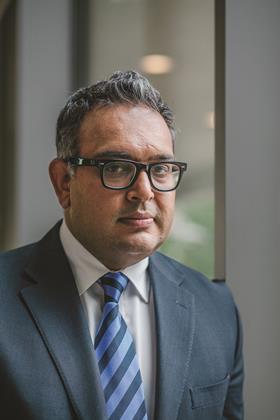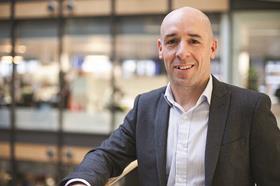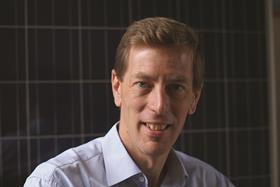HereÔÇÖs your visitorsÔÇÖ guide to the content zones and speakers at Ecobuild, along with some highlights of the talks to come
Ecobuild will feature six content zones in addition to the two conference arenas with all content on the show floor. Each content zone includes an open seminar space with a full three-day programme of sessions.
The sessions aim to inform visitors about the latest approaches to delivering sustainable projects. This includes understanding and making the business case for more sustainable buildings and responding to new legislation, funding mechanisms and incentive schemes.
Sessions also cover the most effective technical responses to the sustainability agenda including detailed case studies. Each session has four to five speakers offering a different perspective on the topic under discussion.
We have asked a selection of seminar speakers to outline what they will be covering in their talks at Ecobuild.
BUILDING PERFORMANCE AND BIM

Wednesday 5 March, 10.30 - 12.00
Applying the lessons learned from the performance gap to future design
Speaker highlight:
Optimising performance in a retail environment and applying the lessons learned
Munish Datta, head of property - Plan A, Marks and Spencer
ItÔÇÖs commonly agreed that the biggest carbon and financial opportunity facing the property industry is reducing the performance gap between design intent and actual energy performance. However, thinking about the gap as ÔÇťreducing energy wasteÔÇŁ will get more traction as everyone recognises that waste is unnecessary.
At M&S we have reduced absolute energy usage in our buildings by 31% since 2006 and saved £70m. Much of this reduction has been inspired by our sustainable learning stores (both existing and new build), where we trial new sustainable technology and practices, embedding successes. We are aware that these buildings could fail to meet design aspirations, underperform in operation, waste energy and money. We mitigate this by continuously evaluating their performance and critically, correcting performance issues early.
Applicable equally to our new and retrofit projects, this approach has taught us some key lessons:
- Joined-up thinking - every stakeholder (designers, manufacturers, builders, FM providers, users) need to focus on performance in an integrated way
- Plan to performance-manage buildings from the outset - not just when the building or refurbishment is complete
- Be bold - Set stretching environmental and user satisfaction targets to motivate the project team and users to meet and better still beat them
- Share lessons widely - Others will benefit from repeating your successes and not your failures
- A war on energy waste in UK buildings will go a long way to meeting national carbon reduction targets and saving money.

Thursday 6 March, 12.30 - 14.00
Measuring and understanding energy use to optimise building performance
Speaker highlight:
Measuring and understanding energy use in practice and diagnosing improvements
Robert Cohen, technical director, Verco
The ║├╔ź¤╚╔˙TV Regulations requirement to install energy sub-meters to new non-domestic buildings is all too often ignored or complied with in such a tick-box fashion that these contribute nothing to improving building performance. Either the system is not commissioned, does not work or delivers poor quality data. Even where insightful data is being produced, there is often no one available to transform it into actionable information. Lo and behold, the energy management of most new buildings is no better than it was before 2002 when the requirement was introduced. Despite the regulatory and financial pressure to make buildings more energy efficient, far too few people take advantage of regulations actually to achieve low energy outcomes. Compliance often turns into bureaucracy, which then results in industry and politicians pushing back against so-called green tape.
Such behaviour is not inevitable. IÔÇÖve recently been evaluating the performance of two new supermarkets at different parts of the retail spectrum. Both have been exemplar energy performers, using energy sub-metering to verify if targets are being achieved. Their behaviour is not altruistic - they know that energy efficiency helps their business to avoid the negative impacts associated with a poorly performing building, even before taking into account the financial savings from lower running costs.
Why has this not become standard practice across the non-domestic sector? I realise repeat business drives suppliers to satisfy key clients, and repeat designs enable feedback to work its magic. But that is the point: feedback does work. The rewards of feedback are a proven fact of life in some sectors. Too often we imply energy sub-metering is a nice-to-have holy grail; rather than the no-brainer proof-of-the-pudding feedback system it should be. Just do it and you will see the difference. Come and learn how.
DESIGN

Tuesday 4 March, 10.45 - 12.15
Near-zero non-domestic buildings - the best approach
Speaker highlight:
What do the 2014 Part L changes mean for the zero carbon trajectory to 2019 for non-domestic buildings?
Dan Jestico, head of research & development, Hilson Moran
The zero carbon policy will be implemented through Part L of the ║├╔ź¤╚╔˙TV Regulations, the latest update of which will go live in April 2014. The industry is expecting another update to Part L in 2016 before the 2019 zero carbon milestone. These relatively rapid updates present a challenge to the non-domestic construction sector. In order to future-proof our industry, it would be beneficial to know what the governmentÔÇÖs planned trajectory is for 2016 and 2019.
It is likely that the definition of ÔÇťzero carbonÔÇŁ will mirror that used for the domestic sector. Stated levels of on-site CO2 mitigation will be targeted, accepting that in the majority of cases, it will be highly impractical to offset all building emissions through on-site means alone.
It is, however, the level of on-site mitigation that is creating uncertainty for the industry. Analysis of the emissions reduction targets implemented since 2002, show a 51% reduction in new build emissions.
However, the modest 9% cut over the 2010 target, implemented for 2013, shows that the government thinks we are approaching a state of diminishing returns as to what can actually be achieved on-site. This supposes that from 2019, the remaining CO2 will need to be mitigated through off-site means, via allowable solutions.
As the UKÔÇÖs next growth cycle really gets going, the industry urgently needs a definition on both the targeted level of on-site mitigation for both 2016 and 2019, plus the eventual costs for allowable solutions in order to plan effectively and efficiently.

Tuesday 4 March, 14.30 - 16.00
Passivhaus design: how to scale up and maintain quality
Speaker highlight:
Case study: Archihaus and Passivhaus schools
Jonathan Hines, architect, Architype
Reducing energy consumption in buildings is vital, especially in larger projects and mainstream housing developments.
Yet there is a massive performance gap between design and actual energy consumption. ║├╔ź¤╚╔˙TV Regulations, BREEAM and the Code for Sustainable Homes are simply not addressing this issue.
Most people are aware that Passivhaus achieves serious reductions in energy consumption and improved internal comfort. I believe that its most significant benefit is its quality assurance of the process of both design and construction to achieve that performance.
Architype has adopted Passivhaus as our core standard because it gives us greater control over the quality and performance of our buildings. Based on sound building physics and the evidence of monitoring, Passivhaus enables us to deliver buildings that actually work.
I will illustrate how we use the Passivhaus Planning Package (PHPP) as a design tool to optimise orientation, form and fabric of our buildings - including Passivhaus schools, a Passivhaus university research centre, and the UKÔÇÖs first Passivhaus archive building - without compromising ArchitypeÔÇÖs passion for design.
I will describe how we work with contractors to improve co-ordination between trades and the quality of construction, to achieve the rigorous construction standards required in order to achieve Passivhaus certification.
I will demonstrate how, in our development of 150 houses with ArchiHaus, a new housing development company we have established, Passivhaus is actually the key driving force in improving design quality and ensuring affordability.
I believe that Passivhaus will exert increasing influence, and then become mainstream, over the next few years simply because it works.
FUTURE CITIES

Wednesday 5 March, 10.30 - 12.00
The resilient city - understanding and overcoming the challenge
Speaker highlight:
Designing with climate - building resilience
Dr Tristan Kershaw, lecturer in low carbon design, Department of Architecture and Civil Engineering University of Bath
Civilisation has evolved during a period of relatively constant climate and hence architecture, urban layout and the way we use buildings have evolved to suit the local climate. For a building to be considered truly sustainable it has to be sustainable over its entire life-cycle, not just for a few years after construction. However, optimising architecture and construction for a particular location and climate presents problems when we consider anthropogenic climate change. Thus far this particular aspect of sustainability has gone largely unexplored resulting in the construction of low carbon buildings, which may function in the short term but fail in the longer term. We can consider a building to be resilient to climate change if it can continue to function, providing shelter and thermal comfort without requiring major structural works or increasing energy demand. This presents a problem, given that the mitigation agenda has already led to increased instances of overheating in buildings and hence, reduced resilience in the current climate. The challenge then is to engineer solutions that allow buildings to be resilient to expected levels of climate change while not compromising the mitigation agenda.
One possible solution is, if we assume that vernacular architecture and urban form have evolved to be adapted to the local climate, we can draw inspiration from other climes to help build resilience to climate change into our urban areas. This will require research into the interaction between urban form and buildings in the built environment and how to manipulate these interactions to increase resilience. It is not possible to make resilient cities overnight; rather, resilience is a progressive process, accumulated by improving the quality of both the physical stock, the urban area, and educating
people in order to encourage societal and cultural change.

Wednesday 5 March, 14.30 - 16.00
Water sensitive urban design (WSUD) - managing urban water
Speaker highlight:
Creating liveable cities with water sensitive urban design
Tony Barrett, principal consultant water, Aecom
Increasing urban density and climate variability are placing huge demands on our natural resources and local ecosystems. Mitigating these impacts needs a step change in the way we approach conventional urbanism.
Water sensitive urban design (WSUD) is one approach that can meet these contemporary demands and transform our built environment. It integrates water cycle management with the built and natural urban landscapes and is a highly effective tool in the box for creating resilient cities of the future.
By recognising the value of water in our cities, we can take steps to store it at source, slow its flow and put it to good use. If done well, WSUD techniques can reduce floods, clean rivers, keep our cities cool, create smart public spaces as well as a providing a new source of water. The sum of these benefits is an improved quality of life for the communities that live and work there.
Many global cities have proven there are few technological barriers that stand in the way of mainstreaming integrated water cycle management. The UK is now at a turning point and recent initiatives to understand the value of community and stakeholder benefits in scheme delivery make a compelling case for change.
Transitioning our towns and cities requires a variety of approaches. Fundamentally we need a vision that is shared between disciplines and communities; we need organisational commitment and perhaps most importantly, champions to deliver.
GREEN ENERGY

Wednesday 5 March, 14.30 - 16.00
Localised/neighbourhood energy solutions
Speaker highlight:
Community energy: localism, not parochialism - community energy as part of the national energy mix
Rachel Coxcoon, CSEÔÇÖs head local and community empowerment, Centre for Sustainable Energy
With the recent publication of the governmentÔÇÖs Community Energy Strategy, now is the time to make sure that community energy really comes of age itself, and communities start engaging in really strategic local energy planning with an eye to national needs.
We need to get community groups, and the local government officials that serve them, thinking far more strategically about the renewable energy resources available to them and how best to maximise that potential, for local benefit and national need.
More and more often, we hear of community groups in small rural settlements who want to develop, for example, a 250kW turbine because the potential output roughly equates to the electricity consumption in their community. But this ÔÇťisland mentalityÔÇŁ planning, at the parish level, risks seriously under-developing the real resources that we have available nationally. And there are two important reasons why this sort of approach is wrong. First, community energy projects will never be considered by the DECC as a useful contributor to our overall national energy generation targets if local communities are unable or unwilling to think with the national picture in mind. In the long run, government support for community energy activity will be minimal if that approach is taken.
Second, communities that take this approach are doing themselves a disservice. There is no other area that offers communities such an amazing opportunity to develop, own, reinvest the significant income generated from infrastructure. Why sell your local community short? This talk will look at using local planning tools to achieve better planning for community energy.

Thursday 6 March, 14.15 - 15.45
Advances in energy storage technologies
Speaker highlight:
Energy storage technologies: overview and opportunities in the current policy landscape
Dr Tim Fox, head of energy and environment, Institution of Mechanical Engineers
Government aspirations and national targets for reductions in greenhouse gas emissions are driving the deployment of renewable energy technologies globally.
In Europe this is evident in the efforts being made across the EU to meet a target of 20% of energy demand sourced from renewables by 2020 and in the UK the previous government legislated for a long-term ambition to reduce greenhouse gas emissions by 80%, relative to 1990 levels, by 2050.
These targets require effort in all sectors of the economy, including transport and heat uses as well as electricity generation. However it is in the latter that short-term focus is being applied and it is the intermittent sources of wind and solar that are dominating deployment markets, with wave and tidal offering future opportunity.
As installed capacities rise in the coming years, energy storage will become ever more critical to ensuring electricity grid stability, optimised returns on deployment investments and reduced infrastructure costs.
Beyond centralised energy systems, storage will also have a significant enabling role to play at the domestic and community level in local systems based on renewable sources.
Driven by environmental aspirations, a desire to enhance local energy security, market participation opportunities, the building of community resilience or simply gaining access to a reliable off-grid energy supply, utilisation of a broad range of storage technologies at varying scales is certain to emerge locally in the coming years.
REFURBISHMENT AND RETROFIT

Tuesday 4 March, 12.30 - 14.00
Retrofit Laboratories - exploring energy saving innovations, technologies and materials
Speaker highlight:
Salford UniversityÔÇÖs Energy House - fabric heat-loss investigations and results of retrofit solutions for a 1919 hard to treat home?
Richard Fitton, technical manager, Salford University
The Salford Energy house is a building physics test bed. We aim to help manufactures develop products that will aid the retrofit transformation needed by millions of homes in the UK. We do this by carrying out controlled tests of technologies under a controlled but real world environment (a full-scale house
from the nineteen-hundreds in an environmental chamber). This allows to test with a product ÔÇťoff or onÔÇŁ under the same climatic conditions.
Many technologies claim to make huge savings in energy, at the Energy House we are concerned only with the verified and proven savings offered by controlled testing.
We do however carry out a substantial amount of field testing on fabric and service improvement measures as we realise that a product can perform differently out of a lab environment.
The problem that exists is that many companies are coming up with energy-saving products; it appears that not many of them have reliable testing carried out to validate the savings being offered.
The solution to this problem lies with researchers and industry to develop a series of tests similar to those used in boiler efficiency and insulation testing
that can be used across a whole array of products. Further to this and equally important is to ensure that these details come across in plain terms to the would-be purchaser.
In the next 1-2 years, we believe that as the economy picks up and more innovation is seen, that the need for testing of energy efficiency products will become even greater, and hopefully co-ordinated in a more sensible way, allowing products to be compared against other similar ones.
The University of Salford hopes to develop this with its soon-to-be-launched Applied MSc in ║├╔ź¤╚╔˙TV Physics, which will help educate a new generation of
experts in building performance testing.

Tuesday 4 March, 16.15 - 17.45
Understanding ECO and accessing funding
Speaker highlight:
Understanding the implications of the changes to ECO and maximising retrofit potential
Matthew Rhodes, managing director, Encraft
The UK retrofit market is in a mess. Recent changes to ECO have resulted in large parts of the industry coming to a shuddering halt while the utilities and the government sort out their differences, and itÔÇÖs always entrepreneurs and innovative SMEs who suffer most in such environments.
ItÔÇÖs also SMEs and innovators who have demonstrated that they can drive change and maximise retrofit potential; ministers and government recognise this publicly; and yet still the market stalls.
Worse, the last people to be considered in the whole debate are the customers themselves, many of whom have completely lost confidence and interest in the market.
Why is this? How can we escape from this difficult position and create a stable and attractive UK retrofit market into the future? Is there scope to go further, and realise the full potential of the retrofit market to create competitive jobs and wealth across the economy?
In the meantime, how can your business make the most of the ECO scheme as it stands today?
ItÔÇÖs time to challenge some of the assumptions and legacy market structures which have got us into this mess.
IÔÇÖll be setting the scene for a seminar in which we not only talk about how to get the most for your business from the existing ECO scheme, but also set out some visions and thoughts for the future direction of this market, including the radical option of getting rid of ECO altogether.

Wednesday 5 March, 16.30 - 18.00
Making retrofit work
Speaker highlight
Taking an occupant-centric approach to deliver energy reductions in practice
Stephen Passmore, technical delivery manager, Energy Saving Trust
You canÔÇÖt have a low-carbon home without a low-carbon citizen. A fair point?
This thinking can lead to the argument that itÔÇÖs not worth the effort of building or retrofitting to higher energy performance standards if the occupant might then use more energy.
I would argue that at best this is defeatist and at worst ignores the developerÔÇÖs capacity to innovate and the occupantÔÇÖs common sense.
Through our work in evaluating the Technology Strategy Board-funded Retrofit for the Future projects, we have identified many examples of what has been done well, and what lessons industry can take away when it comes to focusing on occupants.
We found ways to reduce the risks of retrofitting that may otherwise have an adverse impact on the comfort of occupants, the cost of living, and potentially even property value.
There are many good solutions. Intuitive controls, passive technologies, pro-active resident engagement and effective handovers are all likely to work for the occupants, and ensure lower energy use. Likewise, the risks of rising costs later in the retrofit process from revisits, rectifications and unplanned design alterations can be greatly reduced by considering the occupantsÔÇÖ needs at the design stage.
This presents an opportunity for builders and architects who best understand the needs of occupants to plan effective retrofits, particularly as the UK public become more discerning.
At the same time, smarter heating controls and the roll-out of smart meters are going to mean even greater understanding of energy performance for both industry and consumers.
WATER, WASTE AND MATERIALS

Tuesday 4 March, 12.30 - 14.00
Resource efficient construction and the circular economy
Speaker highlight:
Resource efficient building services.
Ant Wilson, director, Aecom
With the governmentÔÇÖs stated aim to be the greenest ever, combined with its need to meet its carbon reduction targets of 80% of 1990 levels by 2050, understanding and improving the efficiency of its massive buildings estate has never been more critical. As a result, we are witnessing previously unseen emphasis on the promotion of whole-life carbon analysis. One of the most challenging elements of this concept, both to understand and to measure, is the embodied carbon and resource efficiency side and, subsequently, this part has been the least embraced.
Using the findings of the WRAP-funded research that was the basis for CIBSEÔÇÖs Technical Memorandum, Resource Efficiency of ║├╔ź¤╚╔˙TV Services, the session will help engineers and consultants understand resource efficiency and the embodied carbon found within building services systems. This includes examining the opportunities to improve the resource efficiency of cooling, heating, lighting, ventilation and vertical transportation systems. Based on input from consultants, contractors, manufacturers and trade bodies, Resource Efficiency of ║├╔ź¤╚╔˙TV Services is the result of numerous industry engagement workshops.
The session will also look at the three key areas of the guide, explain the methodology of how these were decided upon and provide insight into each section:
- Resource efficiency: the definitions; why it is important; the business case; how it can be assessed; and how to embed the principles into construction projects.
- Best practice: real life examples highlighting where the building services industry has used key principles for the sector and developed ways to increase the resource efficiency of products and services.
- Systems guidance: Guidance for each of the building services systems, components and controls.

Wednesday 5 March, 10.45 - 12.15
Future resilience - floods, droughts and implications for development
Speaker highlight
From sanitation to sanity - the changing perception of water from threat to lifeblood of our cities
Peter Wilder, director, Wilder Associates
By the standards of other Western countries, the UK has tended to lag behind when it comes to water policy.
We still have one of the most complex and fragmented water industries and despite huge annual investment in water infrastructure, we regular suffer the effects of either drought or flood.
While our changing climate is partly to blame, there is still reluctance among engineers and water authorities to move away from an infrastructure-led approach to surface water management.
This approach leaves our sewers overwhelmed during storm events and our aquifers dangerously low if the periods between rainfall events are longer than usual.
While the introduction of Sustainable Urban Drainage has languished due to ÔÇťlack of evidenceÔÇÖ, there is mounting evidence that our current approach is failing.
This seminar session will look at how other countries deal with the implementation of sustainable and passive water management technology, why cities
are now changing and inviting water back in as an important part of climate control, flood resilience and engaging public spaces and how the UK could wean itself off its love affair with concrete and steel in the design of future flood and water management infrastructure.




























No comments yet